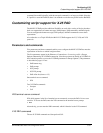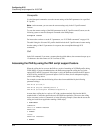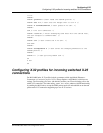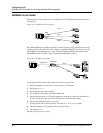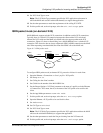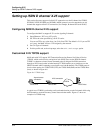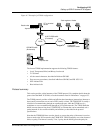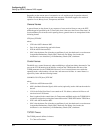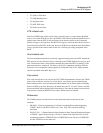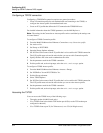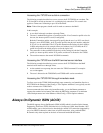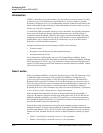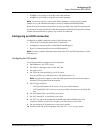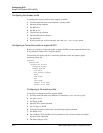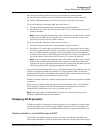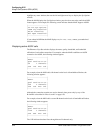
Configuring X.25
Setting up ISDN D channel X.25 support
MAX 6000/3000 Network Configuration Guide 6-33
• T2: SYN-to-SYN timer
• T3: ENQ Handling timer
• T4: Response timer
• T5: DLE, EOT timer
• T6: Frame Arrival timer
DTE-initiated calls
If the first T3POS frame (which can be either a general frame or a control frame) the MAX
receives is from the DTE, the session is qualified as DTE-initiated. When the MAX receives a
general frame from the DTE, it uses the settings in the Answer profile (or the Connection
profile) to trigger a call to the host. The MAX also triggers a call to the host when it receives a
control frame from the DTE. In this case, however, the MAX uses the mode and called address
(if any) specified in the control frame for the call, overriding any setting configured in the
MAX.
Host-initiated calls
The current implementation does not directly support incoming calls to the DTE. Instead, the
DTE answers any host-initiated calls by connecting to the T3POS PAD and listening for such
calls. The host must send a called address matching the pattern the DTE is listening for. The
pattern need not be a complete X.121 address, but can be a subpattern (including wildcard
characters). You configure the listening pattern by setting the Listen X.121 Addr parameter
(which is described in the MAX Reference).
Flow control
Flow control should not be an issue for the X25 T3POS implementation, because the T3POS
protocol has an effective window size of one (that is, every frame must be acknowledged
before another frame is sent) and because the MAX buffers all the frames before forwarding
them to the DTE or the host. However, you should chose the T2, T3, and T4 timers carefully,
because the MAX buffers the data before forwarding it. Note that the current Lucent modem
code performs continuous RTS/CTS flow control, which cannot be disabled.
References
The T3POS protocols are derived from several documents that have become de facto
standards:
• GR-2803—“Generic requirements for a Packet Assembler/Disassembler Supporting
T3POS,” Bellcore GR-2803-CORE, Issue 2, Dec. 1995. This is the basic defining
document.
• EIS 1075-V2.1—“External Interface Specification for Data-Terminal-Equipment Support
of T3POS,” Applied Digital Design, version 2.1, March 1994. Specifies error recovery
mechanisms between a T3POS DTE and a T3POS PAD on one side and a T3POS PAD
and the T3POS host on the other side.



